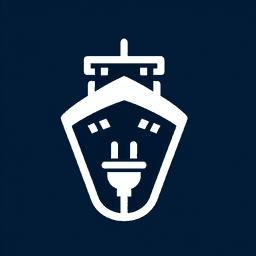
Shore Power: Definition and Examples
January 16, 2025
Shore Power
Shore power, also known as shore supply or shore-to-ship power, refers to the provision of electrical power to a ship from the shore. This system allows vessels to turn off their onboard generators while docked, reducing emissions and noise pollution in port areas. Shore power is particularly beneficial for ships that require significant energy for lighting, heating, cooling, and other onboard systems while at berth.
For maritime users, shore power offers several advantages:
- Environmental Benefits: By using electricity from the shore, ships can significantly reduce their carbon footprint and other emissions, contributing to cleaner air in port cities.
- Cost Efficiency: Utilizing shore power can be more cost-effective than running shipboard generators, especially in ports where electricity is cheaper than fuel.
- Regulatory Compliance: Many ports have regulations that require or incentivize the use of shore power to minimize environmental impact.
- Operational Efficiency: Shore power allows for maintenance of ship systems without the noise and vibration associated with running onboard generators.
Shore power systems are typically standardized to ensure compatibility with various types of vessels, and they are an essential component of modern port infrastructure aimed at promoting sustainable maritime operations.
Understanding Shore Power for Maritime Users
What is Marine Shore Power?
Marine shore power refers to the electrical power that a boat or ship can draw from a source on land when docked at a marina or port. This power is used to run various onboard systems and appliances, such as lighting, refrigeration, and communication systems, without relying on the ship's engines. This process is essential for reducing emissions and conserving fuel while the vessel is stationary.
What is Considered Shore Power?
Shore power is a method of supplying electricity to a ship while it is docked at a port. Instead of using its own generators, the vessel connects to the local power grid through a shore power system. This allows the ship to power all onboard systems and electrical appliances without running the engine, significantly reducing air pollution and noise.
What is Ship to Shore Power?
Ship to shore power, also known as cold ironing, involves connecting ships to landside electricity for their power needs at berth. This includes powering lights, pumps, communications, and refrigeration systems. By using shore power, ships can cut air pollution by up to 95% compared to running diesel-fueled auxiliary engines.
What is the Difference Between Cold Ironing and Shore Power?
Cold ironing and shore power are terms often used interchangeably. However, cold ironing specifically refers to the process of providing electrical power to a ship at berth, allowing it to turn off its engines and reduce emissions. Shore power is a broader term that includes the supply of electric power to ships, small craft, aircraft, and road vehicles while stationary.
Benefits of Shore Power
- Reduces air pollution and greenhouse gas emissions by allowing ships to turn off their engines while docked.
- Decreases noise and vibrations, improving the quality of life for crew and nearby residents.
- Reduces engine wear and tear, potentially lowering maintenance costs.
- Supports the transition to greener maritime operations by integrating renewable energy sources into port infrastructure.
Shore power is a critical component in the maritime industry's efforts to reduce its environmental impact and improve operational efficiency. By adopting shore power systems, ports and shipping companies can contribute to a more sustainable future.




